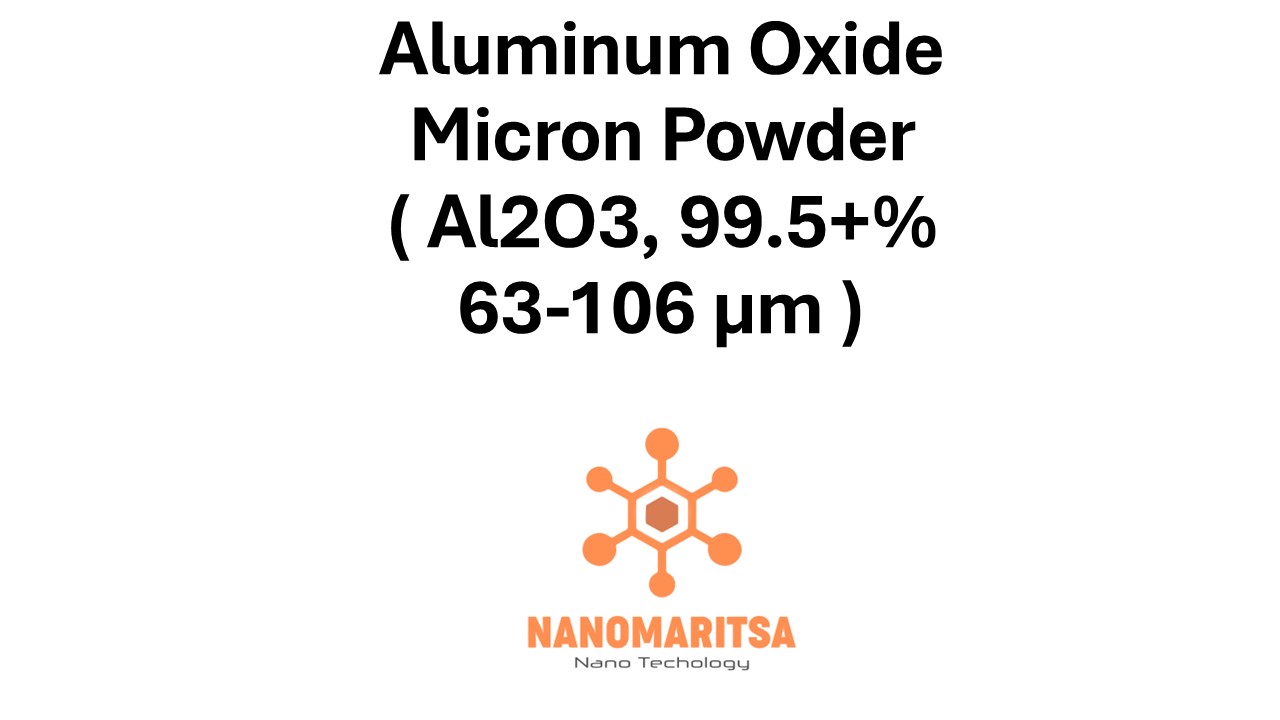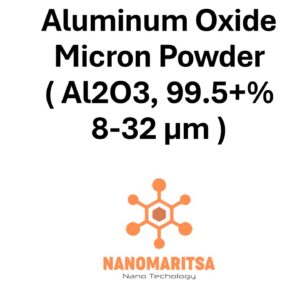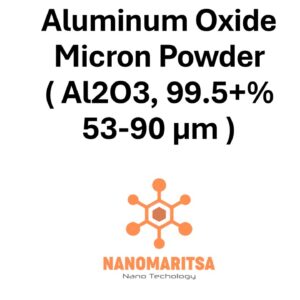Aluminum Oxide Micron Powder (Al₂O₃, 99.5+%, 63–106 µm) is a high-purity alumina powder known for its exceptional hardness, chemical resistance, and thermal stability. With a particle size range of 63 to 106 micrometers, this powder is particularly suitable for applications requiring coarse particles with excellent flowability and consistent packing. Its 99.5+% purity ensures reliable performance in advanced ceramics, abrasives, coatings, and high-temperature industrial applications across industries like aerospace, automotive, and energy.
1. Key Properties
High Purity (≥99.5%) ensures minimal impurities, providing consistent and reliable performance in critical manufacturing processes.
Particle Size (63–106 µm) supports enhanced flowability and packing density, making it ideal for powder-based manufacturing, thermal spraying, and other coating processes.
Exceptional Hardness offers superior wear resistance, making the powder suitable for abrasives, grinding tools, and protective coatings.
Thermal Stability allows the material to retain its structural integrity at temperatures exceeding 2,000 °C, essential for refractory and high-temperature applications.
Chemical Inertness provides durability in chemically aggressive environments, ensuring long-lasting performance in filtration, catalysis, and industrial systems.
2. Applications
Advanced Ceramics & Refractories Alumina is extensively used in high-performance ceramics and refractory materials, offering exceptional heat and wear resistance for kiln furniture, nozzles, and industrial components.
Abrasives & Polishing The 63–106 µm particle size is ideal for manufacturing grinding wheels, cutting tools, and polishing media, ensuring efficient material removal and extended durability.
Thermal Barrier Coatings Alumina-based coatings protect turbine blades, engine parts, and industrial equipment from oxidation, thermal cycling, and erosion.
Electronics & Insulation Alumina’s excellent dielectric properties and thermal conductivity make it indispensable for substrates, sensor housings, and insulating components in electronic devices.
Catalysis & Filtration High-purity alumina serves as a catalyst support and filtration medium, offering stability under high temperatures and corrosive conditions in petrochemical and environmental applications.
3. Advantages
Enhanced Flow Characteristics The coarse particle size improves flowability, ensuring consistent feeding and reduced clogging during sintering, spraying, and other powder-based processes.
Wear Resistance Alumina’s extreme hardness extends the lifespan of components and tools subjected to abrasive and high-friction environments.
Thermal Durability Alumina retains its mechanical properties under extreme heat, making it reliable for refractory linings, thermal barriers, and high-temperature industrial processes.
Chemical Stability Resistance to aggressive chemicals enhances the reliability and durability of alumina-based products in filtration, catalysis, and chemical processing.
Electrical Insulation Alumina’s dielectric properties make it an ideal material for insulating components in high-voltage and high-temperature electronic systems.
4. Recent Trends and Research
Additive Manufacturing is incorporating coarse alumina powders for producing complex ceramic parts through advanced 3D printing techniques like binder jetting and direct energy deposition.
Advanced Coating Technologies are improving the adhesion, durability, and uniformity of alumina-based thermal and protective coatings for aerospace, automotive, and industrial applications.
Optimized Abrasives are being developed to enhance cutting efficiency, reduce wear, and deliver higher precision in industrial and consumer applications.
Sustainability Efforts are driving the recycling of alumina from used abrasives and ceramic waste, supporting greener production cycles and reducing environmental impact.
Energy Applications are expanding, with alumina being increasingly utilized in catalysis, filtration, and energy storage systems to meet cleaner and more efficient industrial standards.
5. Future Prospects
High-Performance Ceramics will continue to evolve as advances in powder processing and sintering enable the production of intricate and durable alumina components.
Innovative Coatings leveraging alumina’s thermal and wear-resistant properties will play an increasing role in aerospace, automotive, and energy industries.
Medical Applications will benefit from alumina’s biocompatibility and wear resistance, supporting the development of advanced surgical instruments, dental tools, and implants.
Lightweight Structural Composites reinforced with alumina will find broader applications in automotive and aerospace industries, providing enhanced strength-to-weight ratios.
Clean Energy Solutions will see alumina’s role grow in catalysis, filtration, and energy storage technologies, supporting sustainability and innovative energy systems.
With its 99.5+% purity and 63–106 µm particle size range, Aluminum Oxide Micron Powder (Al₂O₃, 99.5+%, 63–106 µm) offers outstanding durability, thermal stability, and wear resistance for a wide variety of industrial and high-performance applications. From advanced ceramics and abrasives to protective coatings and electronics, alumina remains a vital material in modern engineering and manufacturing.
| Measurement (gr) | 100 grams, 500 grams, 1000 grams |
|---|






